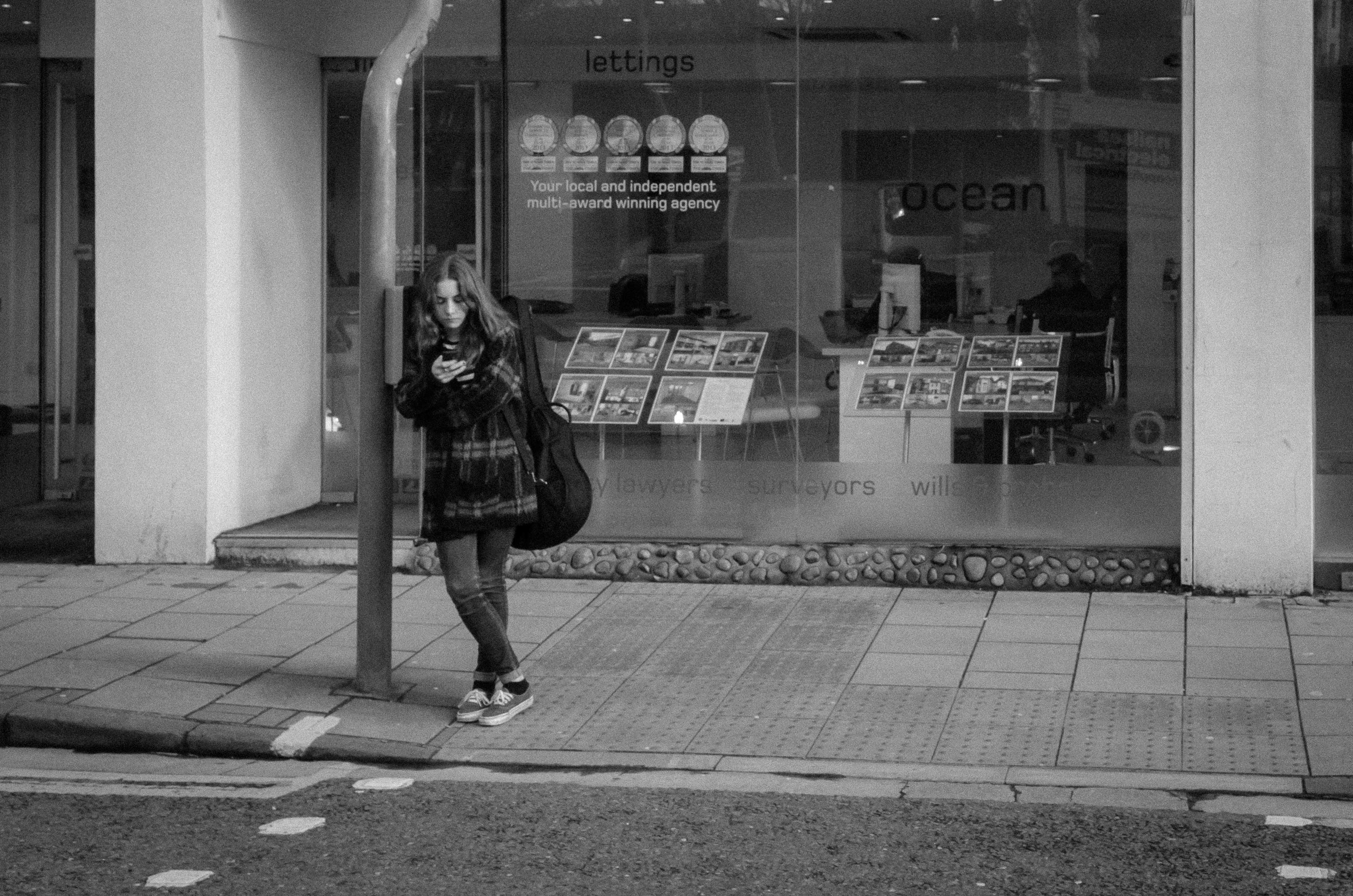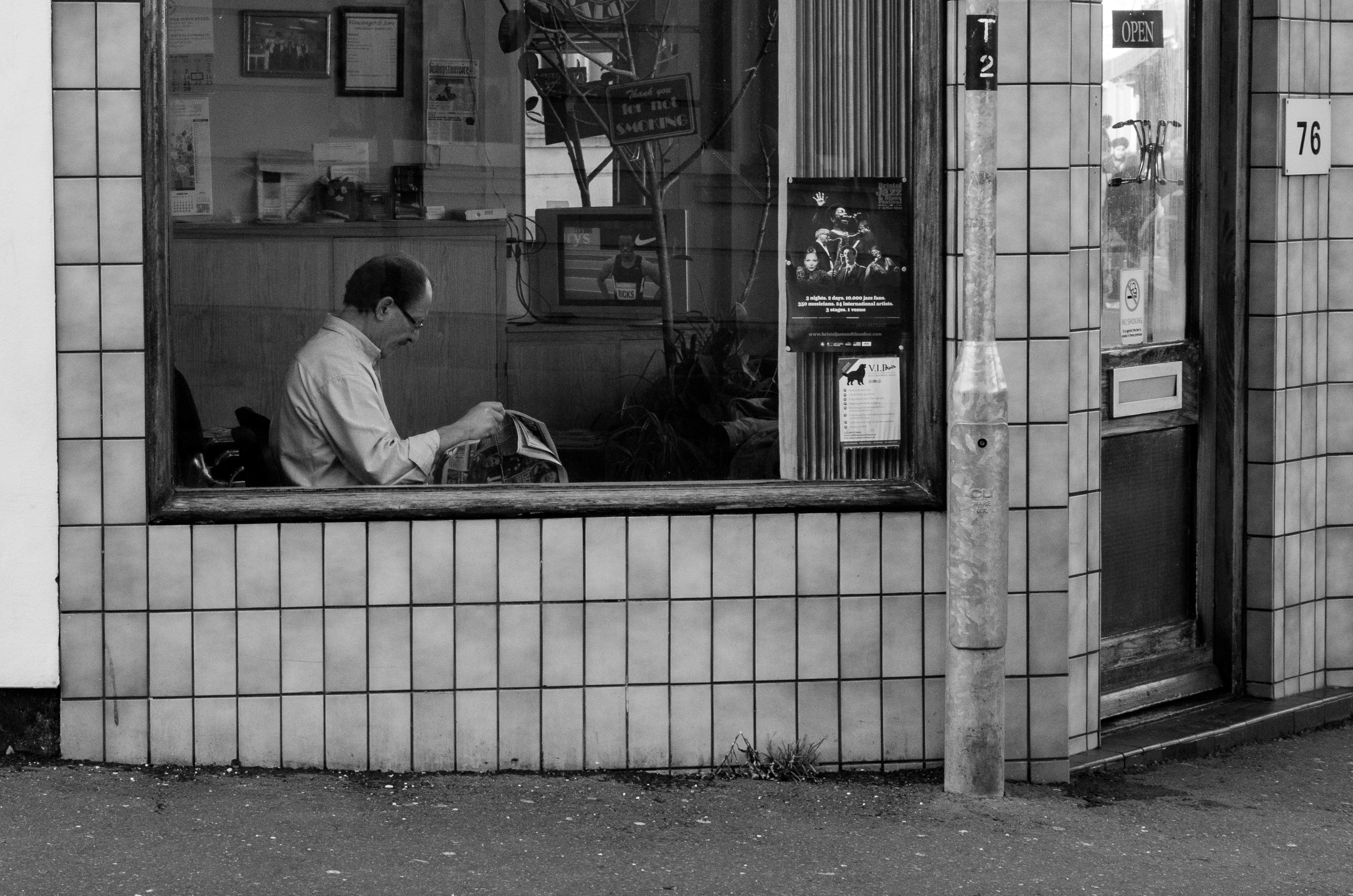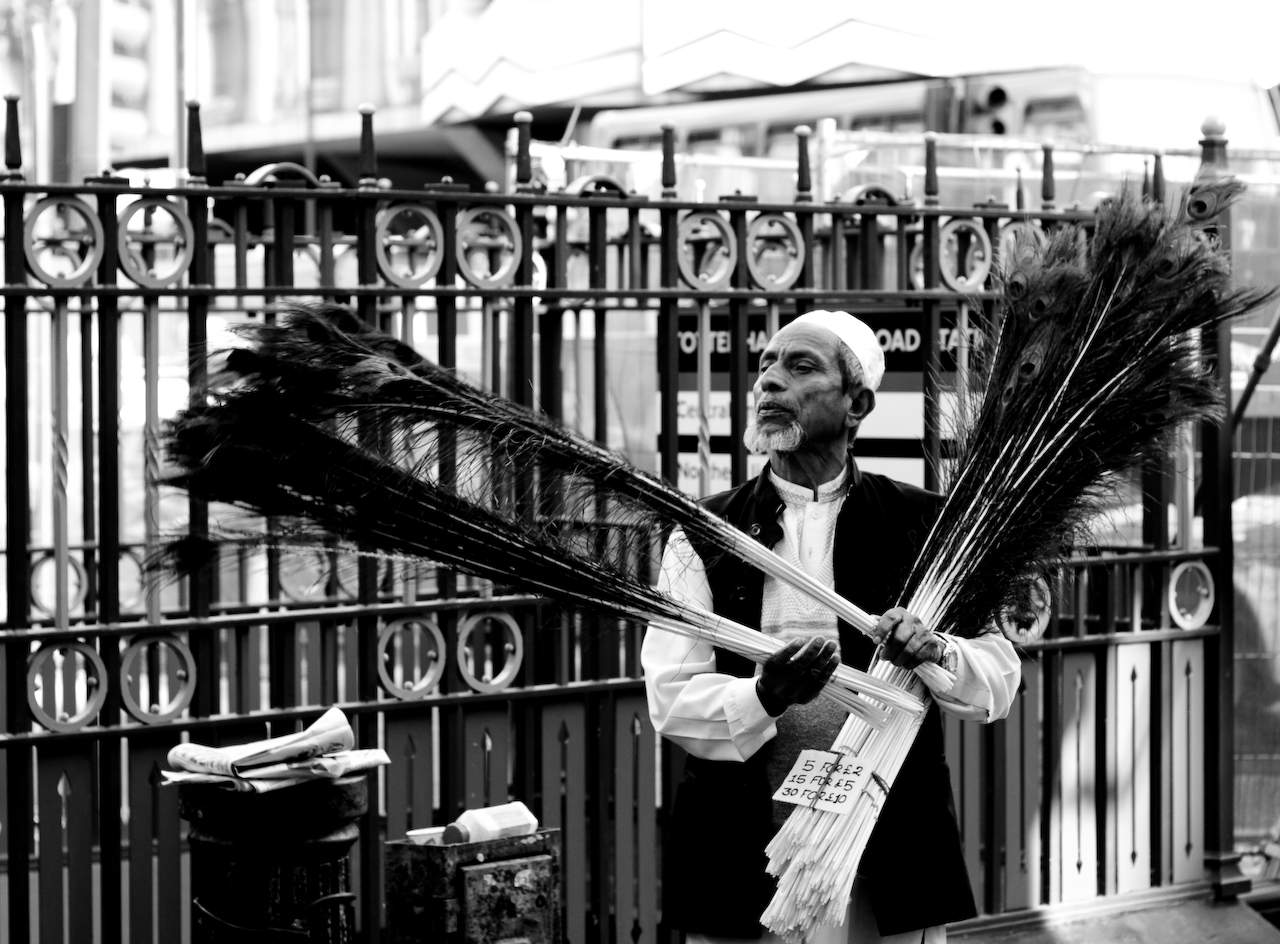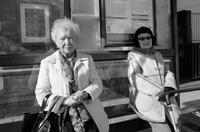After having purchased a new camera last week, I have decided that I need to learn more about photography. One of the genres of photography I have enjoyed most over the last 8 years has been taking photos in urban environments. Mostly my photography has consisted of urban landscape, architecture and objects. During my photography slump of the last two years, where I have taken few photos, I have become more and more interested in the discipline of street photography. Mainly consisting of taking candid shots of moments and people, this style is quite difficult to do well as it requires quick thinking, the ability to see a photographic moment occurring and often a propensity to invade a stranger’s personal space.
My first street photo was actually in 2008. At this time I don’t think I even realised what street photography was. I had been walking along Oxford Street in London when, upon reaching the corner with Tottenham Court Road, I stumbled across a man selling peacock feathers. Without even thinking I took the shot and walked away. Over the years I have come back to this photograph many times. A print of it even hangs on my hallway wall.
Just before Christmas I learnt of Eric Kim who blogs about street photography and even offers weekend courses focused on conquering the fear of taking photographs of strangers in public. At the beginning of February, Eric wrote a blog post describing an open source street photography course covering the basics of street photography and consisting of video lectures, readings and assignments. I have decided to follow the course and as such this post constitutes my first assignment.

This week consisted of a selection of reading based around the definition of street photography. I found the discussion on candid vs posed vs staged to be particularly interesting, especially with regard to the contact prints from a number of photographers where it becomes obvious that there are a lot more posed photos than one might otherwise have thought. So I guess for me street photography becomes “What I find on the street or in an urban environment”. If that means that there are posed photographs then so be it — the photographer is already affecting their environment by merely being there. The line, however, would be drawn for me at premeditation of a scene (i.e. staged). That wouldn’t be something I have found on the street. It would be a composition I had set out to create which was reasonably well defined in my head prior to deciding to have a photography session. Is it pre-determined vision or on-the-fly composition?

Then came the question about the ethics of cleaning up a photograph in post-production. This I find an interesting question… where should the line be drawn. In theory unless I am spontaneously pointing and shooting, the act of composition (even looking through the viewfinder) involves decisions. What do I include within the frame, what do I exclude, how do I position objects within the frame, do I move to afford a better composition, what exposure should I use, how close shall I get to my subject? How does that differ from post production composition? How does cropping the image in post differ from “cleaning up” an image? If I was a documentary photographer, photojournalist or historian then in theory I would try to remove bias from my work and concentrate on accurate reproduction. But then history is written by the winners and even the historian or the journalist can be swayed by their own opinion or the drive to have their photo on the front cover. If I am creating art then is there a difference between “photoshopping” and cropping? It is hardly an accurate reproduction if I convert a colour image to grayscale and adjust curves, exposure, etc. So do I need to accurately reproduce, or reproduce at all, objects within the frame? If i am not creating art then what am I creating?


